Boquerones, Fresh Cured Anchovies
July 24, 2014 | Updated March 31, 2022
As an Amazon Associate I earn from qualifying purchases.
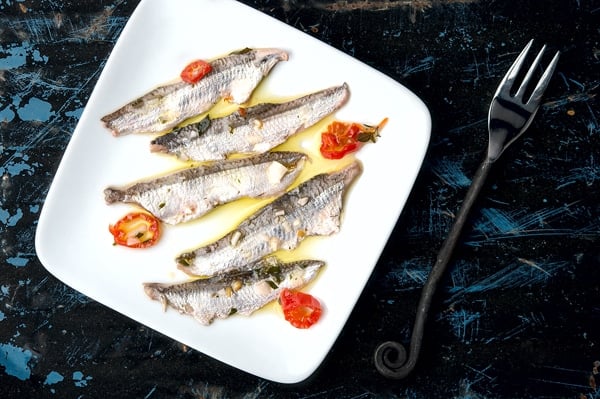
Anchovies are a polarizing ingredient, and here in the United States the battle lines are typically drawn over their presence or absence atop a pizza. Occasionally skirmishes will also break out over whether anchovies belong in a Caesar salad; apparently not, at least in its original incarnation.
But these fights are over are traditionally cured anchovies, which are a warm, lovely brick color when properly cured. These anchovies come in cans, soaked in olive or soy oil, or are sometimes packaged in little jars, encrusted with salt.
They are, alas, the only sort of anchovies most North Americans ever see. And while they can be good — really good in some cases — a far more delicate delight is the “fresh cured” anchovy, known in Spain as boquerones, in Greece as gavros, and often as “white anchovies” here in the United States.
I was an adult when I first encountered boquerones, lined up like little sardines in a tub in the deli section of a glitzy market called Agata & Valentina on the Upper East Side of Manhattan, back in about 1995. They were labeled as “fresh white anchovies,” but they sure looked cured. I asked the woman behind the counter if I could taste one. Miraculously she said yes — there is a tradition in the New York metro area of people “sampling” their way through places like these, essentially eating their lunch for free.
The fish was certainly not fresh. Eating one I got a big hit of lemon and vinegar, then salt, then garlic, then herbs. The anchovy itself was indeed white, “cooked” like a ceviche, firm and shockingly un-fishy. I mean yeah, you know you’re eating a fish, but regular anchovies can be so fishy-salty they’re off-putting. Not these.
I bought a half pound, and my then-wife and I ate them at one sitting, on crackers with some white wine. A romantic moment in our short little marriage.
Since then I eat them whenever I see them, and have made boquerones (bo-keh-ROAN-es), the name I see most often, at home several times. It is an easy process… if you can get fresh anchovies.
There’s the rub. Anchovies spoil faster than any other fish I know of. Faster than herring, faster even than sardines. So getting fresh ones is a task, and is the biggest stopper for making boquerones at home. I have seen them in fish markets, sometimes at Whole Foods, sometimes at really good local markets, and sometimes at Asian markets.
But honestly? The best way to get fresh anchovies is to find a bait shop near the Atlantic or Pacific Ocean. There’s one in San Francisco that supplies the fishing fleet in the Bay Area.
This is where I got my anchovies. Not too long ago, I was fishing for California halibut with my friend Jay Lopes of Right Hook Sportfishing and we motored over to get some bait before we hit the bay. Halibut and stripers love nothing more than to eat live anchovies. It happened to be a slow day, although I did catch a decent striped bass. No halibut, though.
But I did bring home the leftover bait, about five pounds of live anchovies, so I was more than happy.
Besides, it’s just not possible to get anchovies fresher than this, and they were gorgeous.
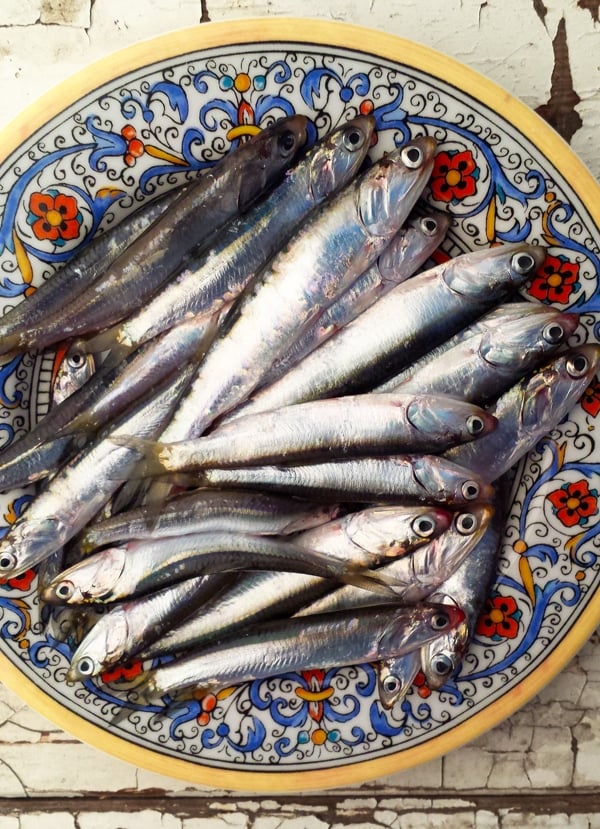
If you have to buy anchovies in a market, look at their bellies: Sardines, anchovies and related fish get what’s called “belly burn” rapidly after being caught. The enzymes in their guts start to dissolve the fish itself. This first manifests itself in broken bellies. The fish can still be OK to eat at this point, but they will not have much time left.
To make boquerones, you must clean your anchovies. This is a bit of a pain. Fortunately here is a video on cleaning anchovies, which I suggest you watch before starting. It will take about 45 minutes to clean a couple pounds of anchovies.
You can cure them with their backbones left in, but they are not as easy to eat.

Once cleaned, you salt the anchovies down for a few hours, then rinse and soak in lemon juice (Greeks seem to do this most often) or vinegar (the Spanish way). The salt draws out some moisture from the fish and firms them up, while the acid “cooks” the anchovies like a ceviche.
To store, you layer them in a lidded container with garlic, chiles and herbs and cover them with olive oil. Kept in the fridge, they will keep for more than a month.
It isn’t likely that they will last this long, however. White anchovies are addicting when eaten on crackers (I like Carr’s table water crackers the best for this.) either as a snack or as an appetizer course. I love them so much I tend to fish the San Francisco Bay not so much for the halibut or striped bass — don’t get me wrong, I want to catch them, too — as for the bait.
Jay thinks I’m crazy. That’s OK. I hear that a lot.
Boquerones, Fresh Cured White Anchovies
Ingredients
- 2 pounds anchovies, cleaned
- 3/4 pound kosher salt (roughly)
- 1 cup red wine vinegar or lemon juice, or sherry or white wine vinegar
- 6 garlic cloves, minced
- 3 tablespoons parsley, minced
- 1 to 5 small hot chiles, sliced thin (optional)
- 1/2 cup olive oil
Instructions
- Keep the cleaned anchovies whole for now. You can pull the two little fillets apart when you are ready to serve your boquerones. Lay down the salt in a wide, lidded, non-reactive container; I use a tupperware. Lay down a layer of anchovies, then sprinkle salt over them. Repeat until you have all the anchovies in the container. Finish with the rest of the salt. Jiggle the container a bit to let things settle, then cover it and put it in the fridge for 3 hours.
- Remove the anchovies and rinse them quickly under cold water. Set them in another container like your first one. When they are all nicely rinsed, cover the fish with the vinegar or lemon juice. They need to be fully submerged, so use as much as you need. Cover and refrigerate overnight.
- The next morning, remove the anchovies from the vinegar. Toss the vinegar. Now find a final resting place for your anchovies, some lidded container that you can keep in the fridge for a few weeks. Pour a little olive oil into it, then line the container with a layer of anchovies. Sprinkle a little of your seasonings over that layer and repeat until you are done. The anchovies need to be completely covered in olive oil or they will spoil. You can eat them after a few hours, but they are better after a few days or even weeks. Mine have lasted 6 weeks before getting a little janky.
Notes
Nutrition
Nutrition information is automatically calculated, so should only be used as an approximation.


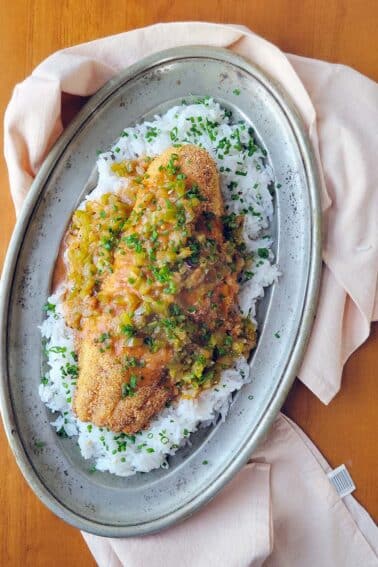
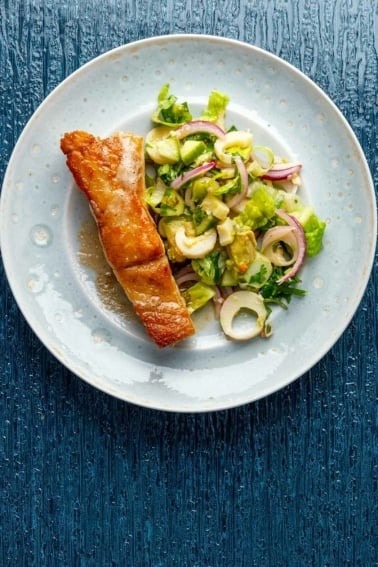
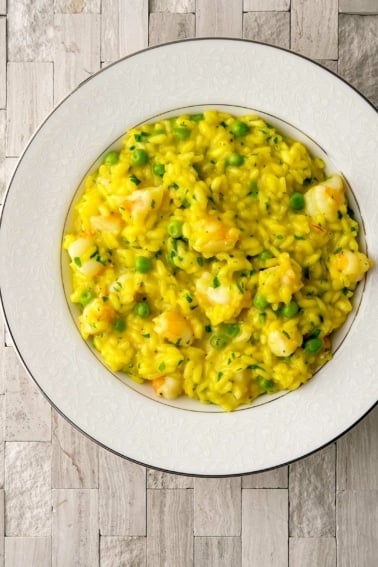
I’ve never had boquerones before but reading this made me want to try! Where do you usually find live anchovies to buy? Also, what is your favorite brand of cracker to eat boquerones with? 🙂
Sarah: Truly fresh anchovies are difficult to get. I know you can get them in California, and I’ve seen them in high end markets in NYC, too.
I love boquerones
Given leftover wine is acidic enough to make this recipe work, what are the recommended adjustments?
Jason: It’s not. Wine usually has a PH a full point higher than even a weak vinegar.
Hi Hank, do you know the name or location of the shop in SF where you got your anchovies from? I’ve been looking all over to get them here, but can’t find anywhere that has them (aside from one shop who got a batch in but sold out before I could get there).
Luke: It’s a bait depot on the wharf side near Ghiardelli.
I’ve used this recipe several times now, Thanks Hank. I buy frozen anchovies at the Davis Food Coop and then follow the recipe. While the fishes are frozen, the salting followed by vinegar/lemon juice firms up the flesh and the final product has been given thumbs up by multiple friends. If there was a live source in town, I’d be tempted to try it side by side. Finally, the first place we had these was a beer bar in Santa Cruz called Lupulos.
The Rosetta video on cleaning anchovies is marked as private and can’t access. Any other videos?
Bev: Just go on YouTube, there are many. I just found this one https://www.youtube.com/watch?v=KDDI-1IV0So
I live in India and the anchovies here are similar to those in the Mediterranean sea.
They don’t come much fresher. Caught overnight and purchased from the fishermen’s wives who even clean them. 1kg (2lbs) fresher ain’t possible ?
Used your recipe and was transported to Bar Petaca in Zaragoza north of Barcelona.
Thanks pal.
I’m very excited to try this recipe. Question – I’ve read other boquerones recipes that call for freezing the anchovies to kill bacteria but notice that’s not called for in your recipe – is this because the salting / curing step sufficiently kills bacteria? Would freezing the anchovies affect their texture? Thanks!
Teresa: I’ve never heard of anyone freezing anchovies. To my knowledge they are not parasitized. And yes, freezing them will turn the fish to mush. I wouldn’t do it.
We do freeze them here in Spain because there is the risk of parasite (small but still a risk). You only need to freeze overnight but this needs to be done before the curing process.
A traditional recipe I follow adds the salt to a vinegar solution. Quantities vary with the number of fish you are preparing but you basically add enough salt to the vinegar so that a fish will more or less suspend in the middle of the container (within the salt and vinegar solution). Then simply rinse, layer with olive oil (lots of it:-), garlic and lemon zest. Or, if you have some chopped up cured lemon peel (Moroccan cured lemons)
Sprats work well – here around the Baltic Sea you cannot find fresh anchovy…
I think they have the same kind of enzymes.
Would it taste ok if canned sardines are used?
Crystal: No.
Hi Hank,
Many thanks for this recipe – I made these last weekend and we loved how they came out (used lime instead of lemon). I have a new batch marinating overnight as I type this. Actually four batches – using anchovies and sardines and splitting those into lemon marinade and lime marinaded batches.
I’m originally from the US, but living in Sao Paulo, Brazil. Down here, fresh anchovies and sardines are easy to come by. And limes are cheap but lemons relatively expensive when you can find them. I’ve been saving the vinegar/citrus marinade for up to a week in the fridge after draining it off the fish. It has a light fish sauce twangy, garlicky, salty, spicy flavor that (at least to me) seems to go well with everything.
Thanks!
Hi Hank, where do you buy the fresh anchovies in SF?
KeepSFGreen: You buy them as live bait at the dock near the Ghirardelli building.
I used tawilis ( Philippines )…and my husband loves them.We were thinking to open a bbq place but now hes thinking picked fish might be easier! I used coconut vingear.I was worried about the saltiness…but he likes it salty.I was actually looking to pickle herring Swedish style…buy im on this road now. Thanks.
Much obliged. Cheers! ?